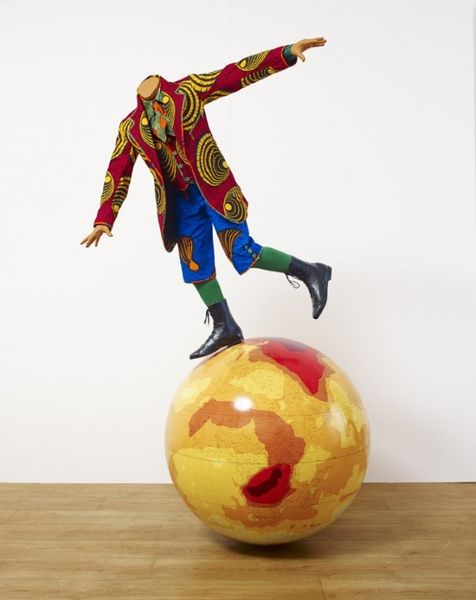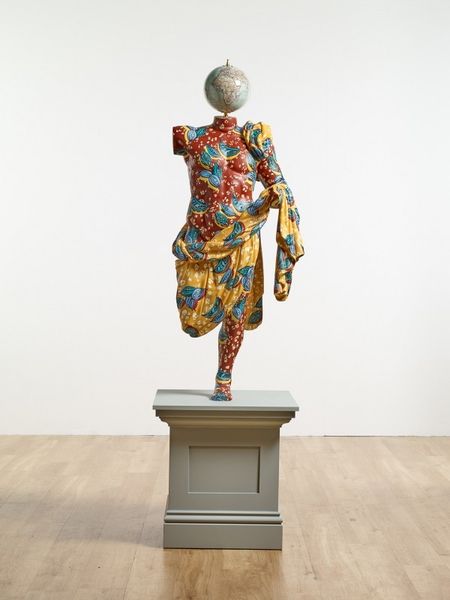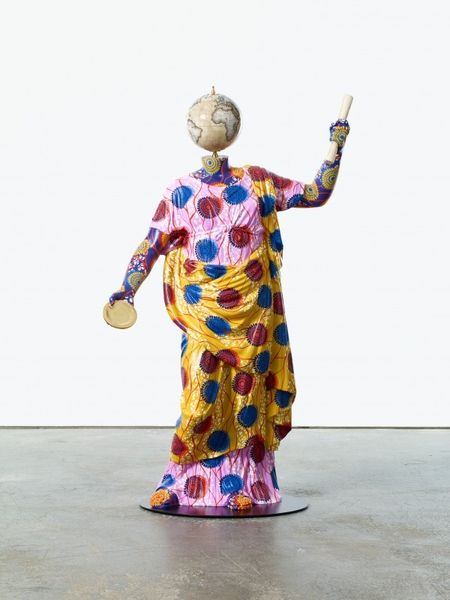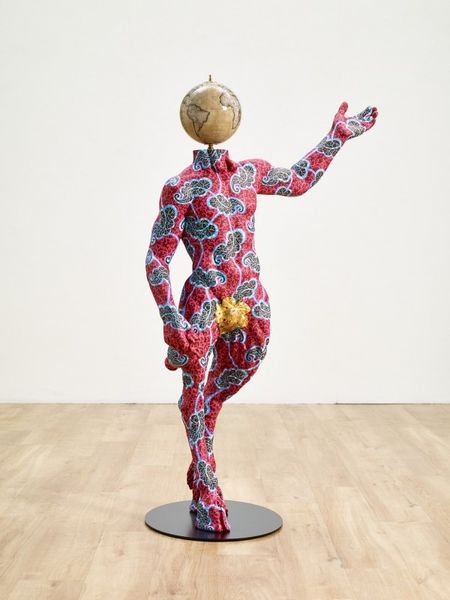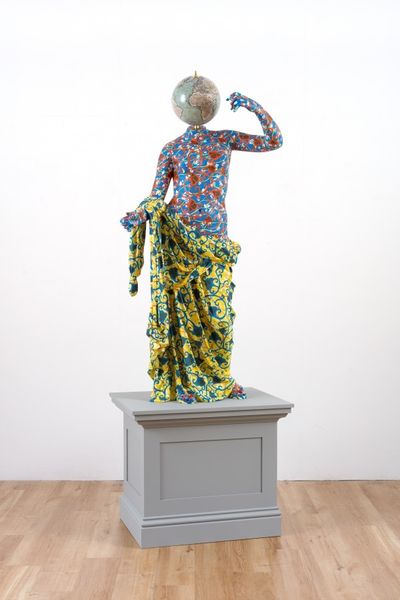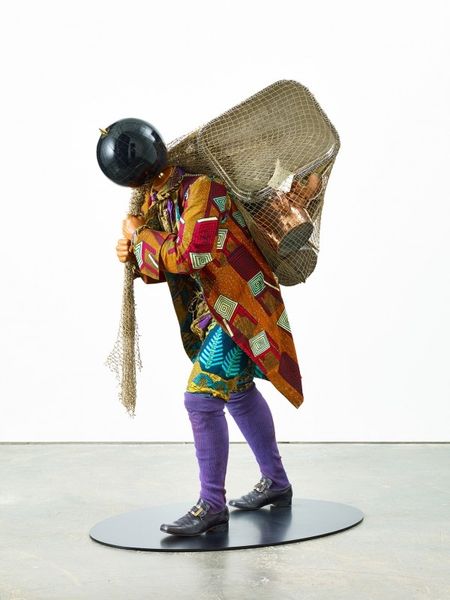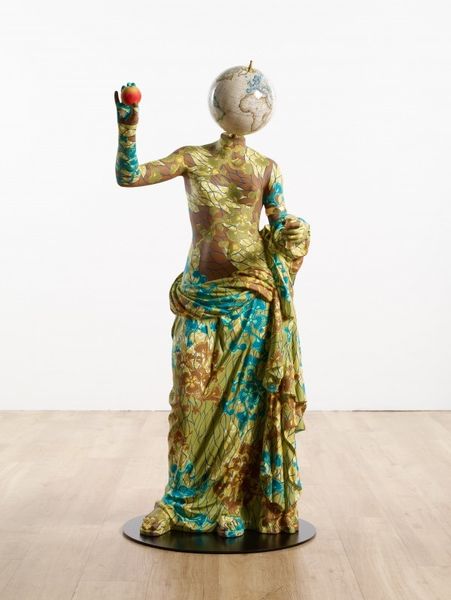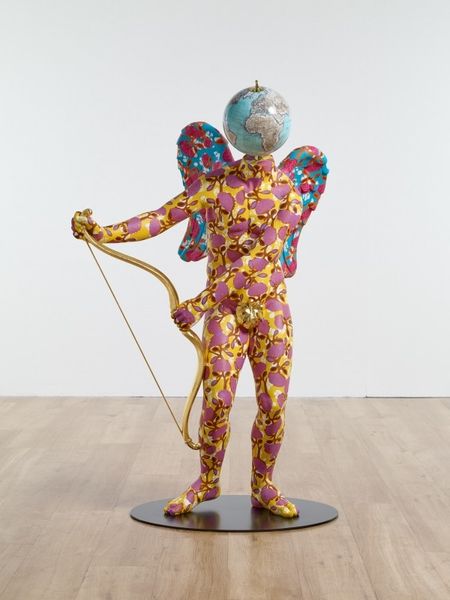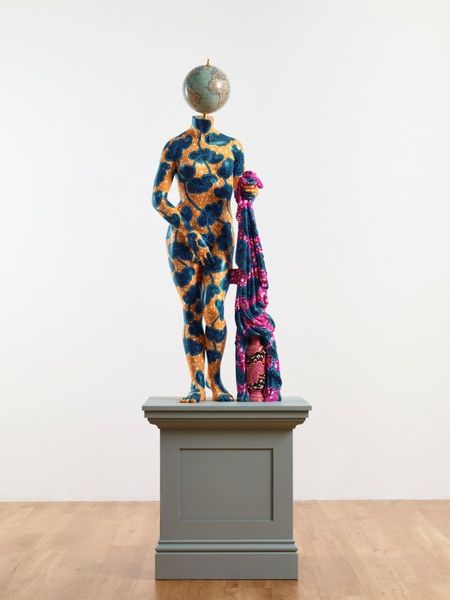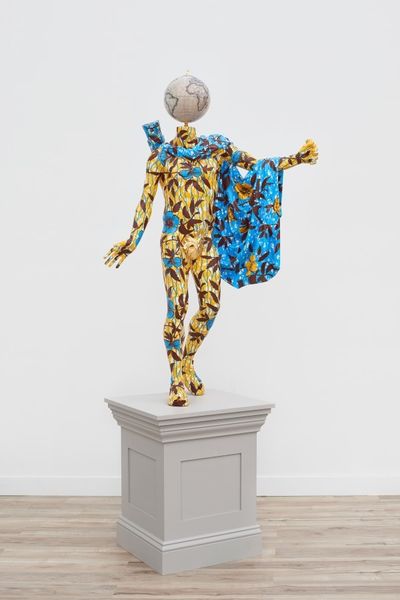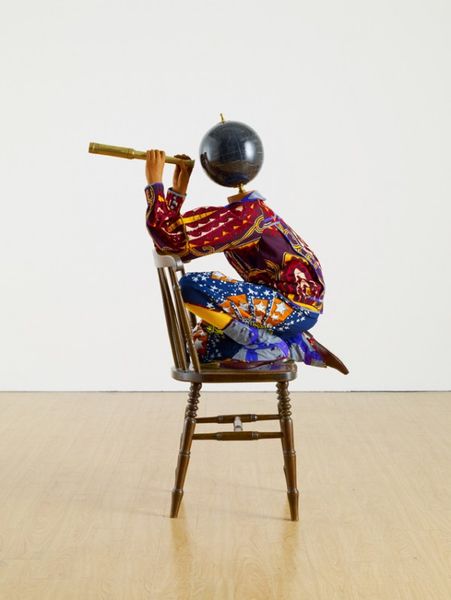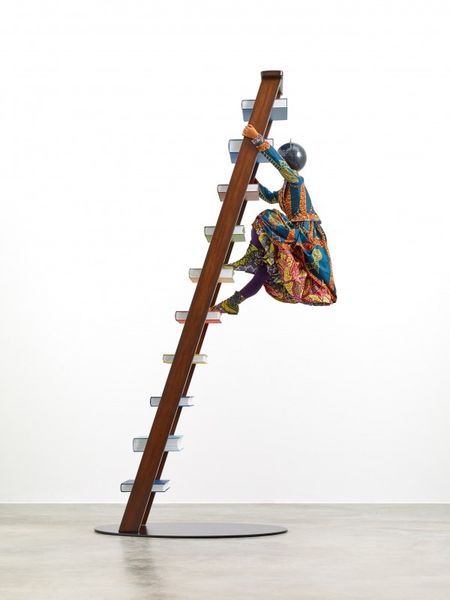
mixed-media, assemblage, ceramic, sculpture, installation-art
#
african-art
#
mixed-media
#
contemporary
#
assemblage
#
sculpture
#
ceramic
#
figuration
#
sculpture
#
installation-art
Copyright: Yinka Shonibare,Fair Use
Curator: Editor: Standing before us is Yinka Shonibare's "Mrs. Pinckney and the Emancipated Birds of South Carolina," a mixed-media sculpture from 2017. It strikes me as both whimsical and unsettling – a figure in elaborate fabric, yet with a birdcage for a head, perched atop a globe. What should we make of this curious combination of elements? Curator: That "curious combination," as you put it, is exactly where the power lies. Shonibare often uses historical references to critique colonialism and its legacies. Have you considered the implications of situating a figure reminiscent of the colonial era—the title points to Eliza Lucas Pinckney, a South Carolina plantation owner—atop a globe? Editor: It suggests a certain dominance, a global reach of colonial power. But the birdcage and the "emancipated birds"... do they represent a counter-narrative, perhaps? Curator: Precisely! The Dutch wax fabric, often mistaken as authentically African, is itself a product of colonial trade. Shonibare uses it to question notions of cultural authenticity and hybridity. And Mrs. Pinckney? She’s allowing a bird to fly from her fingertip, while another one lands above the birdcage on her head. What can be gleaned from the birdcage acting as a "mask"? What happens to the identity? Editor: So, it is more about constraint and, potentially, freedom? As if colonial structures imposed a kind of confinement, but also unintentionally created spaces for resistance and liberation. But her historical agency cannot be removed either... Curator: Exactly. The artwork invites a dialogue about these multifaceted forces – how power and resistance, oppression and liberation, are intertwined within specific histories and their lasting effects. This is what Shonibare is really good at making the public realize when we stop and reflect on his choices as an artist. Editor: I see. I initially saw only the visual oddity, but now appreciate how deeply embedded it is within these layers of history, identity, and power. Thank you. Curator: And thank you for pushing us to consider it anew. It's a piece that continually challenges us to confront uncomfortable truths and complex histories.
Comments
No comments
Be the first to comment and join the conversation on the ultimate creative platform.
